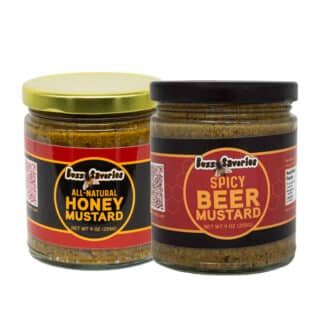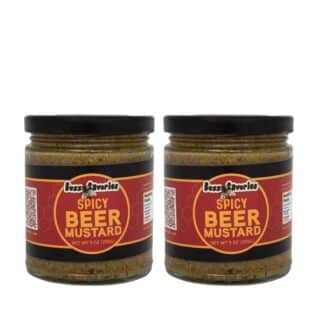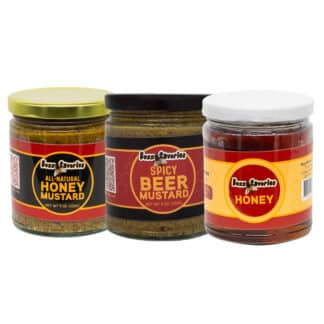Discovering Whole Grain Mustard
Historians estimate that mustard has been used as a spice since at least 3000 BC, and not long after this flavor discovery, mustard was developed as a condiment when the ground seeds were mixed with the fresh, unfermented juice of wine grapes. It is thought to be one of the first crops to be domesticated, and varieties of mustard were used throughout ancient Egypt, India, and China and soon spread to the rest of the world.
Given such a long and distinguished history and worldwide acceptance, I find it fascinating that the first references to whole grain mustard — where seeds are only partially ground or left whole in the finished condiment — doesn’t occur until the 1970s. The 1970s. Mssrs. Grey and Poupon started selling their Dijon mustard product in 1777.
Whole grain mustards, such as Buzz Savories Honey Mustard and Spicy Beer Mustard are simply mustards that have been ground just enough to form a paste, but not so much that it fully breaks down all the mustard seeds, creating a thick, coarse texture. Whole grain mustard is not beholden to any formula per se, which explains why there are so many artisanal choices online. Most use wine and/or vinegar in their recipe, and a portion of heartier brown and black seeds instead of yellow to provide a little extra punch. Buzz Savories uses beer from a local microbrew which we think gives the finished product a more rounded taste.
I personally love the extra texture and bite of a whole grain mustard. Not only does whole grain mustard make a great spread for sandwiches, but it’s a great condiment to serve with a charcuterie and cheese board. It’s also very pleasant in a vinaigrette, combined with minced shallots, garlic, honey, olive oil, salt and pepper, or as an ingredient in a number of the recipes you’ll find on our recipe page.
If you haven’t tried Buzz Savories Honey Mustard and Spicy Beer Mustard, we hope you do. And that when you do, you find something new to like in the world.
-

Mix & Match Sets
$25.00 Select options This product has multiple variants. The options may be chosen on the product page -

Spicy Beer Mustard
Rated 5.00 out of 5$25.00 Add to cart -

The Sampler
$40.00 Add to cart
